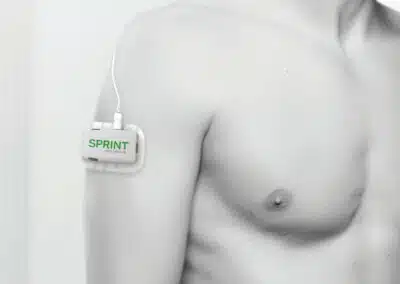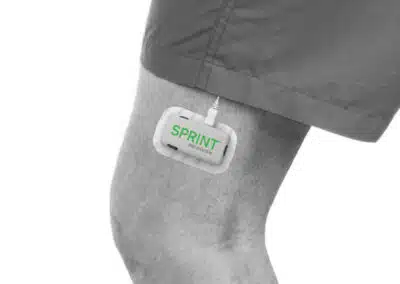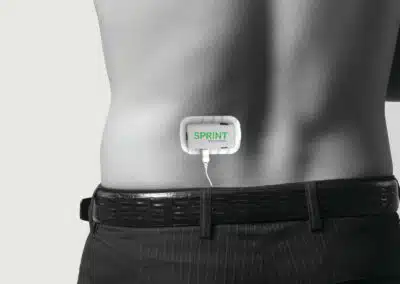Peripheral Nerve Stimulation (PNS)
Chronic pain in your back, shoulders, knees, and even headaches are often caused by the peripheral nervous system. Peripheral nerve stimulation (PNS) stimulates the affected nerves and can help reduce pain.
PNS uses electrical impulses to treat pain by stimulating specific nerves in the peripheral nervous system. It is commonly used for chronic pain conditions, particularly when more traditional treatments, like medication or surgery, are ineffective or carry high risks. PNS has gained prominence due to its non-invasive nature and effectiveness in managing a variety of pain conditions, including neuropathic pain, post-surgical pain, and certain musculoskeletal pains.
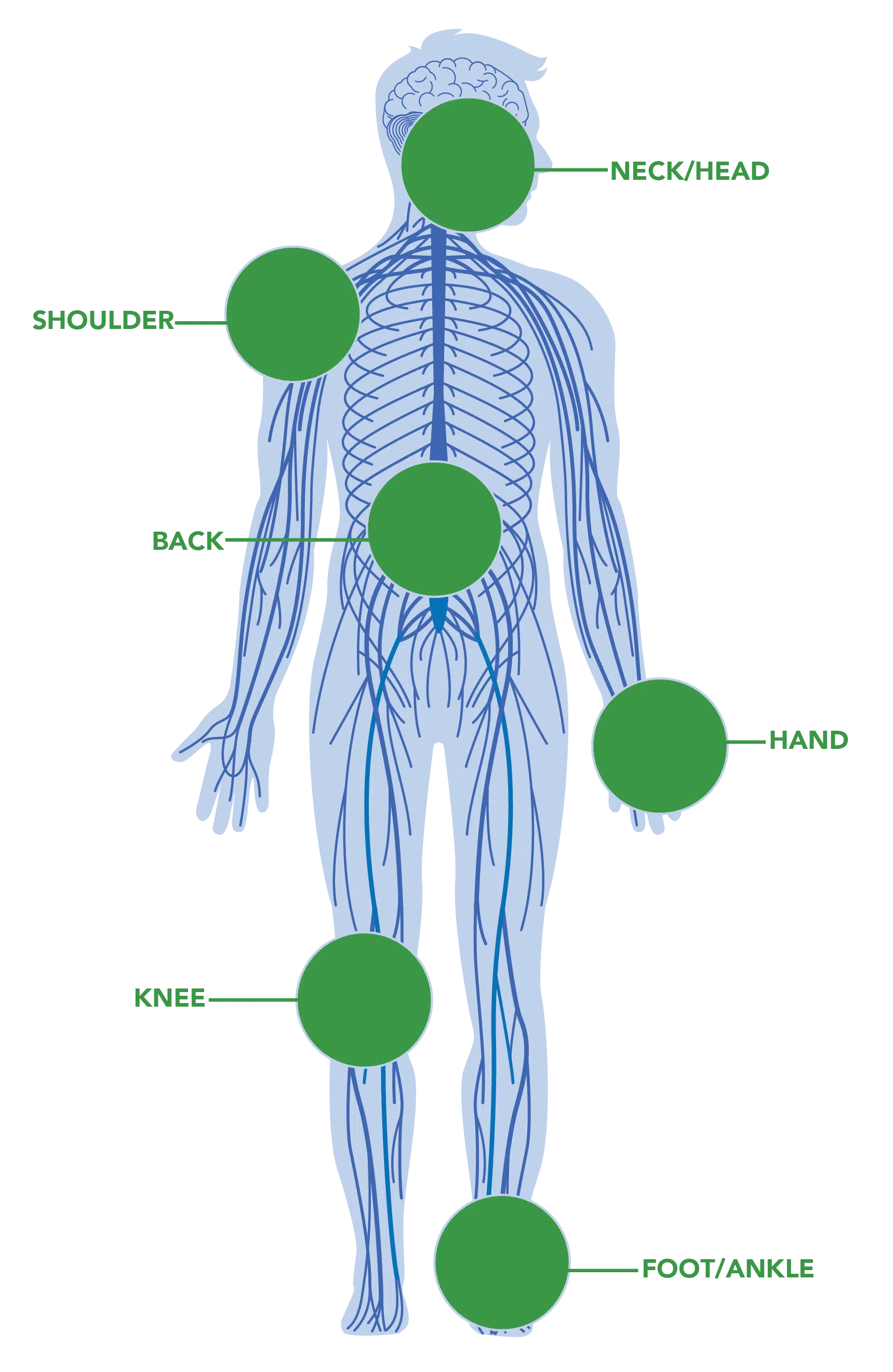
A Patient’s Guide to the Peripheral Nerve Stimulation Process
What is Peripheral Nerve Stimulation?
PNS utilizes a small device known as a pulse generator, which is typically placed under the skin in a spot adjacent to the target area of pain. A thin lead with electrodes is then inserted near the nerve responsible for transmitting the pain signals. The lead is connected to the pulse generator, which sends electrical impulses to the nerve.
The stimulation parameters (such as frequency and intensity) are adjustable and tailored to the individual patient’s needs, often controlled by the patient through an external remote control. This flexibility allows for real-time adjustments to optimize pain management.
How does PNS Work?
These impulses interfere with the nerve’s ability to send pain signals to the brain, thereby providing pain relief. The electrical impulses emitted by the device effectively “mask” pain signals, preventing the brain from receiving the pain information. Additionally, the stimulation of certain nerves can trigger the release of natural pain-relieving substances, such as endorphins, providing further relief.
PNS can help lessen pain caused by:
- Headache disorders, including episodic cluster headache, chronic migraine, occipital neuralgia
- Complex Regional Pain Syndrome (CRPS), a chronic pain condition often characterized by severe, burning pain in one or more limbs.
- Post-surgical pain
- Diabetic Neuropathy, a type of nerve damage that can be associated with diabetes.
- Chronic back pain
- Phantom limb pain
- postherpetic neuralgia, a burning pain caused by shingles
Criteria to be a good candidate for PNS
PNS isn’t the right option for everyone with pain. iSpine clinicians will use a careful process to select who will benefit from the intervention. The first thing to consider is whether the pain can be identified as coming from a distinct peripheral nerve.
The next consideration for the iSpine experts to determine is whether the patient has tried or been considered for more conservative treatments, such as over-the-counter pain medications; prescribed medications or injections; physical therapy; and nerve blocks without adequate relief of their pain.
Our clinicians may also suggest a psychological evaluation to identify factors that could affect the outcome of PNS, such as depression, anxiety, and personality disorders.
Peripheral Nerve Stimulator: What to Expect
Assessment
iSpine offers various options in PNS devices, and your experience may depend on which device you and your provider choose. The first step is to meet with the iSpine team to discuss your medical history, as well as the features and benefits of each device and choose a direction for your procedure.
Trial
Depending on your device, you may have a trial procedure, which will help assess the device’s effectiveness for your physical and mental well-being.
Implantation
During a minor outpatient procedure, your device will be implanted. Your pain specialist will numb the skin around the appropriate area with a local anesthetic. Because your feedback is helpful in pinpointing the ideal location, your pain specialist will talk to you while positioning your device. After it is in place, a bandage is placed over the insertion site.
The implanted device is connected to an external pulse generator, which is adhered to your body with a small mounting pad. Your pain specialist will take time after the PNS placement to show you how to operate your device using a hand-held remote, and will provide information on how to manage your PNS system.
What to Expect after your PNS procedure
Some patients see an improvement in their pain right away, while some find that it takes time for the pain to recede, gradually minimizing over the course of several weeks. While every patient is different and results vary, research studies found that most patients had sustained pain relief for months or more after treatment ends. In yearlong studies, a majority of patients continued to have sustained relief post-treatment. One survey of patients found that a majority of those who responded to the treatment had sustained long-term improvements in pain and/or quality of life, even up to 24 months later.
You will need to limit activity and motion near the treatment area for one week post-procedure, and your bandage will need to be changed 1-2 times a week (more if it becomes soiled, damp, or unstuck). Following the initial week of rest, you will be able to resume most normal activities. You will be provided with detailed instructions following your procedure, including:
- Cleaning & Care – you will need to change your bandages regularly, and may require assistance from a friend or family.
- Bathing – you will not be able to take a bath during the treatment period. You will need to disconnect the Pulse Generator and remove your Mounting Pad before taking a shower.
- Swimming must be avoided during the treatment.
- Driving – Stimulation should be off when you are driving.
You can discuss specific guidelines based on your individual needs with your clinician.
Living with pain doesn’t have to sidetrack your life. Call us today for a consultation.
Peripheral Nerve Stimulator Technologies
iSpine offers various options in PNS devices, and your experience may depend on which device you and your provider choose.
Sprint® PNS
With the Sprint System, a tiny MicroLead™ (twice the size of a human hair) is placed under your skin near a nerve that is causing you pain. A small device sends gentle electrical pulses through the MicroLead to stimulate the nerve. A simple handheld remote allows you to control the stimulation level to find an intensity that works best for you. After 60 days, the MicroLead is removed, and treatment is complete. Over 70% of patients in clinical studies reported significant and sustained pain relief. Read real patient stories of relief >
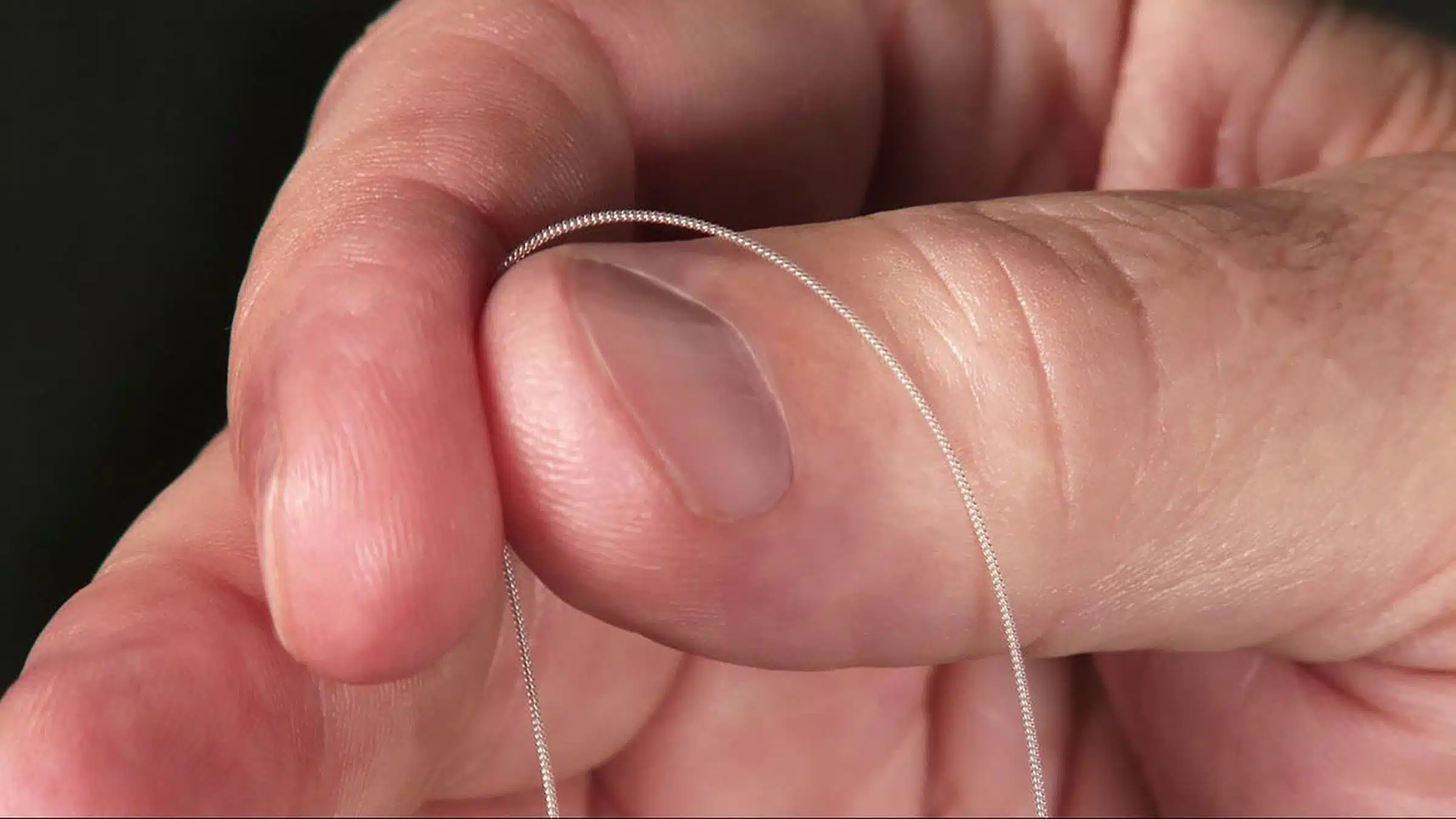
The Sprint PNS System is a minimally invasive, non-surgical treatment that stimulates the nerve and can reduce pain. You can expect:
- 60-day treatment
- Incision-free
- Drug-free
- Surgery-free
- No permanent implant
Curonix Freedom® Peripheral Nerve Stimulator System
Curonix offers the Freedom Peripheral Nerve Stimulator (PNS) System with an implantable stimulator that relieves pain by sending electrical stimulation to a specific nerve, blocking pain signals from reaching the brain. The PNS System treats intractable pain by targeting individual peripheral nerves, providing a long-term approach to help alleviate chronic pain.
Freedom Stimulators are:
- Cleared for Use in the U.S.
- Non-Drug, Non-Opioid
- Minimally-Invasive
- Typically, an Outpatient Procedure
- Full-Body MR Conditional at 1.5T and 3T*
*For full MR conditions and product safety information, please see Instructions for Use or visit curonix.com
Explore the Twin Cities Metro Clinics where we evaluate patients for Peripheral Nerve Stimulation
*iSpine Clinics where Peripheral Nerve Stimulation procedures are conducted
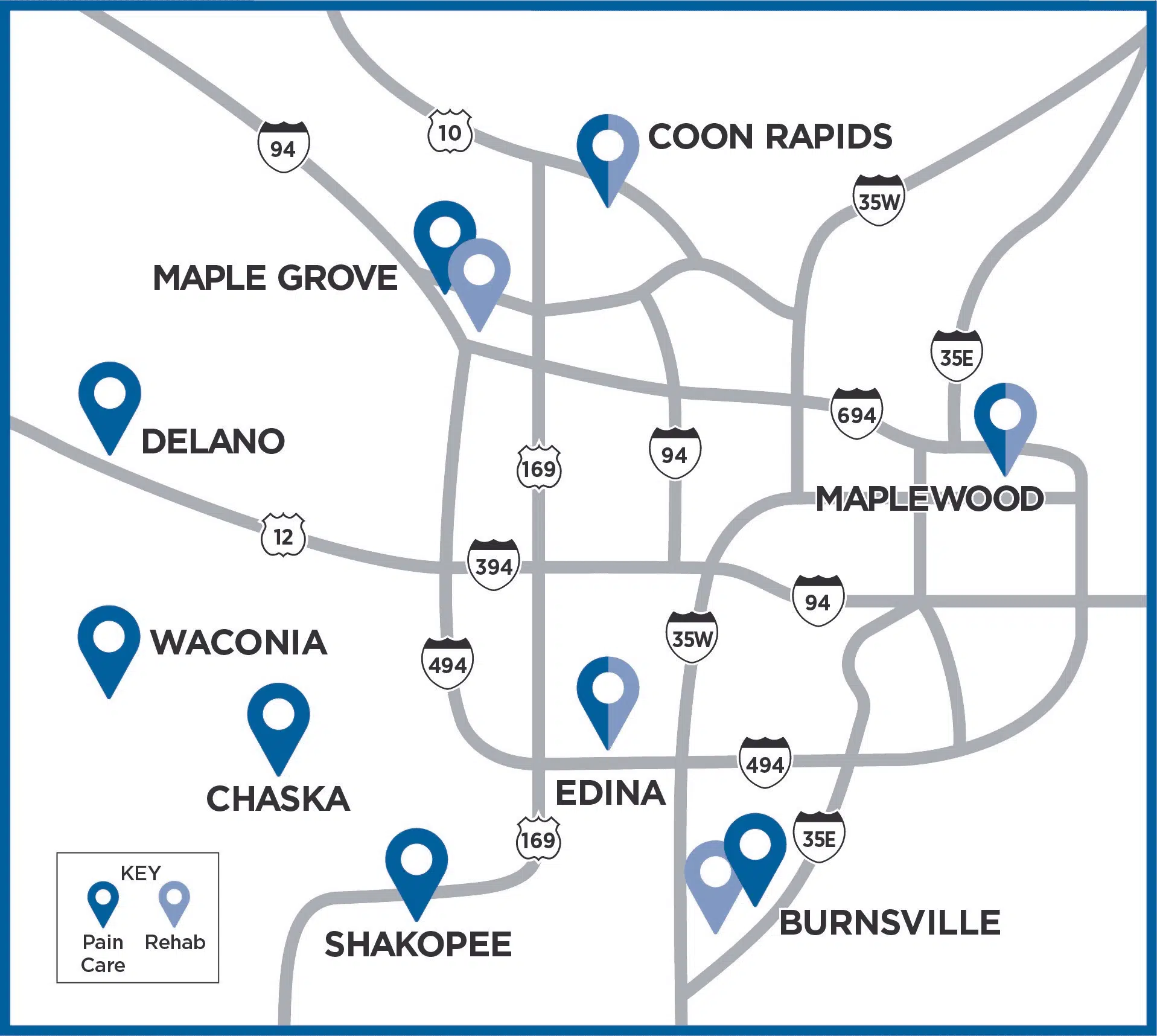
Dark blue pins represent iSpine Pain Clinic locations
Explore FAQs related to the SPRINT PNS System: https://www.sprtherapeutics.com/patients/faq/


